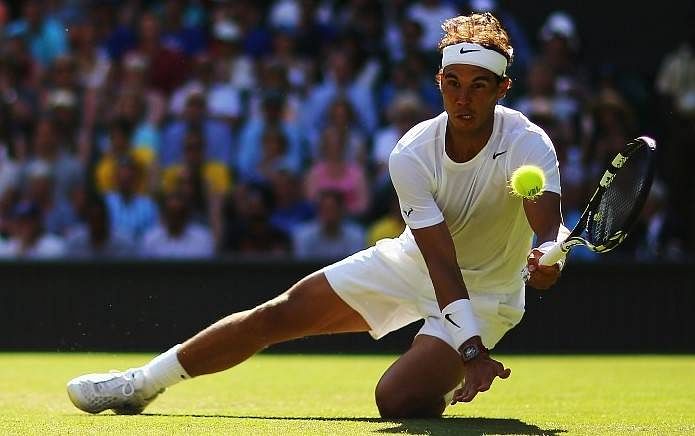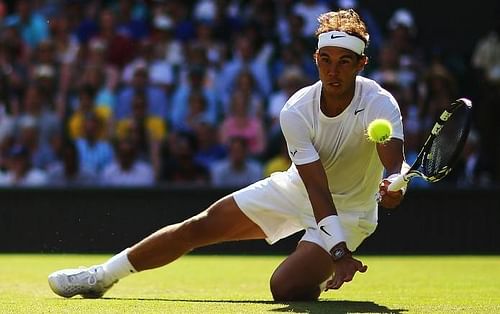
Rafael Nadal and the curious case of 'Stan Wawrinka effect'

I like to call it the ‘Stan Wawrinka Effect’ in light of what transpired at the French Open, just over a couple of weeks ago, where the Swiss no. 2 – seemingly came from nowhere to win his second Grand Slam title.
Not only was Wawrinka in ontention, but his form too had been largely unimpressive. As such, his win – over Novak Djokovic no less – made him to be a stand-out, not unlike the time when he won his maiden major at the Australian Open, over a year ago. However, in terms of the Championships, not only has Wawrinka’s surprise made him a favourite – of sorts, but it’s also turned attention towards a few other players, who look to be capable of changing the tide of favouritism at the AELTC.
The names of Kei Nishikori and Milos Raonic are the ones that strike the mental chord initially, before attention diverts towards the likes of Tomas Berdych and Jo-Wilfried Tsonga, who have been around longer and have had partial successes before in the tournament. And then, there’s Rafael Nadal, of course.
The Re-alignment of the ‘Big Four’
With the boundaries of the concept of ‘Big Four’ being shifted yet again after the French Open, Nadal looked to have lost the most. He couldn’t win a single title during the European clay swing, a period that saw him lose in a demoralising fashion to not just Djokovic, but also to Andy Murray, a player against whom he had had a perfect record on clay. The loss of points understandably lead to the drop in rankings, which coupled with Wimbledon’s unique ranking system, saw him being seeded at a lowly 10th spot.
However, this lowly seeding could be the gain – the proverbial knock of opportunity – for the two-time former champion, especially with focus not on him, but rather on the man who could be his quarterfinal opponent.
The Potentiality of the Nadal-Murray Quarter-final
On Andy Murray, so to speak.
History recounts that Murray has never been able to do well when under the spotlight. And this time, thanks to his winning efforts in Queen’s, the 2013 Wimbledon champion is under immense scrutiny, almost on par with the defending champion, if not more.
It’s still a long way to go in the tournament, with the Mallorcan still finding his way about, trying to get his inconsistent game back on track. Nonetheless, at this year’s Championships, the outlook for the former world no. 1 isn’t as bleak as it was previously, thanks to his win in Stuttgart, a few weeks ago.
Nadal back to winning ways on grass
As far as achieving Pyrrhic victories go, Nadal managed to get his in the most riveting manner possible, making the loudest of impacts. It also seemed appropriate, given the nature of the surface and his absorbing past playing on it.
Almost seven years ago, he played one of the finest matches of his career to win his first Wimbledon title. It was a match that’s been defined as an epic, ending Roger Federer’s era of dominance. His second win there came two years later, in 2010, a year of his resurgent best.
Since then on, except for 2011, when he made it to the final – as the defending champion – Nadal’s been cutting a nondescript figure. His spate of early losses at the Championships also, yet again, raised speculations about his difficulties in playing on grass, alongside a few other insinuations regarding the future of his career.
Somehow, nothing looks insurmountable for Nadal this year with precedents like that of Wawrinka – and even Marin Cilic, carried forward from last year – changing the face of expectations. Unpredictability, irrespective of favourites, surrounds the men’s draw in Wimbledon this year, and Nadal looks set to add to this existing volatility.